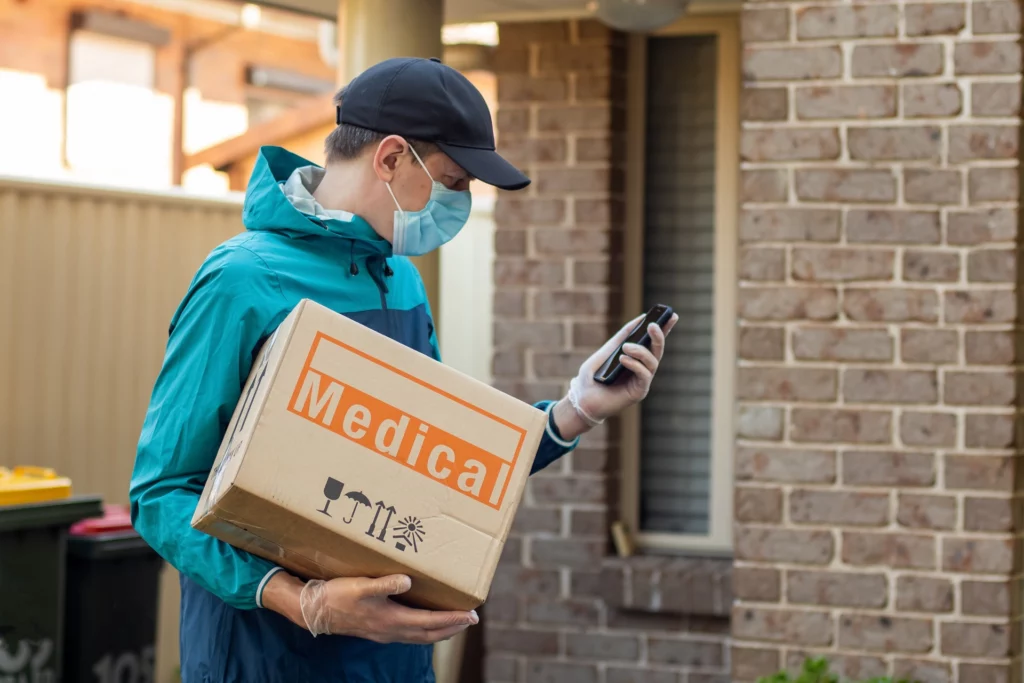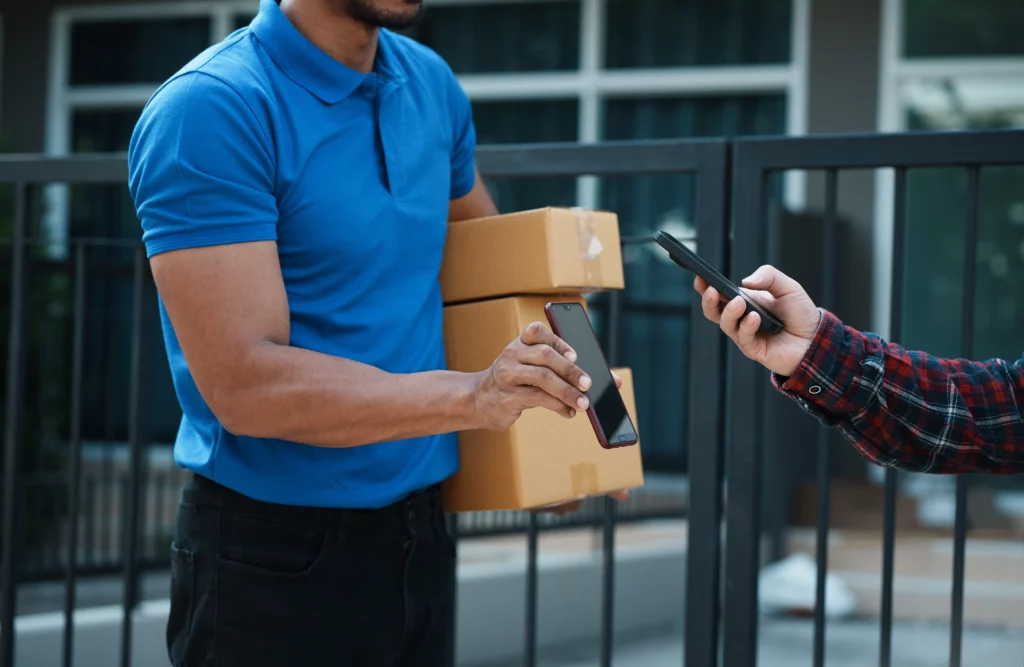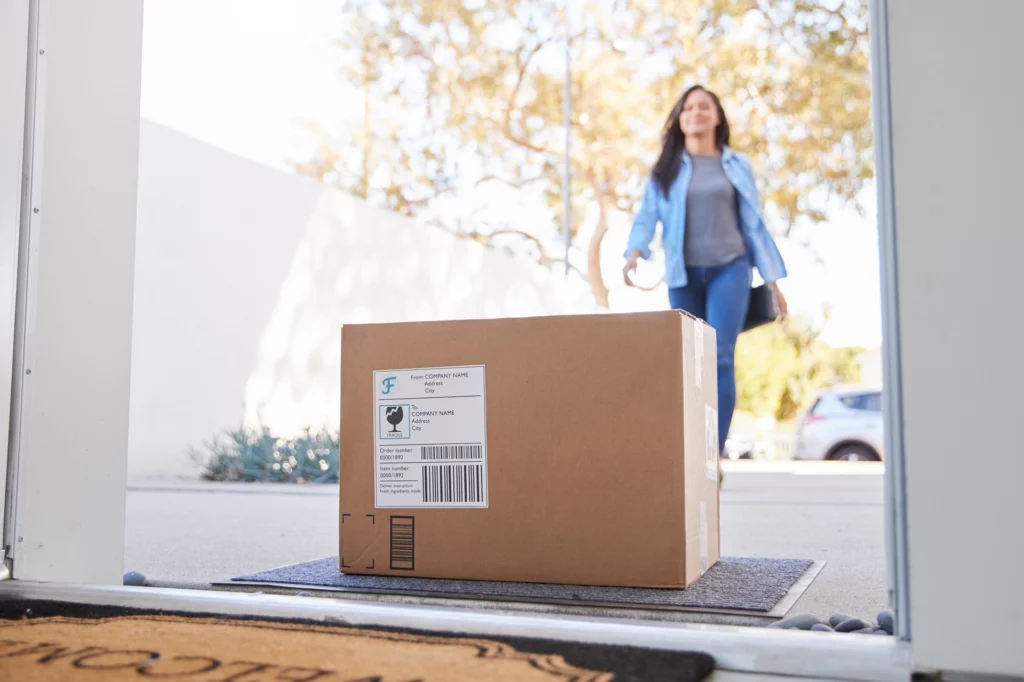How Your Last-Mile Fleet Can Enable Contactless Delivery

Wise Systems

Contactless delivery became a well-known term during the COVID-19 pandemic, but it has since become a part of everyday life. With health and safety being priorities for many consumers, contactless delivery meets those needs while maintaining reliable delivery service for food, prescription medications, packages, and more.
This guide covers everything you need to know about enabling contactless delivery for your last-mile fleet.
In this article:
- Why Does Contactless Delivery Matter?
- 4 Ways to Enable Contactless Delivery
- Optimizing Solutions for Last-Mile Fleets and Their Customers
- Frequently Asked Questions
Why Does Contactless Delivery Matter?

Contactless delivery allows consumers to receive their deliveries without compromising their health or safety. This is especially important for people with health conditions, but many consumers also prefer contactless delivery as an added layer of protection for themselves and their families. Contactless delivery is here to stay, so last-mile fleets should learn to incorporate it into their everyday operations.
4 Ways to Enable Contactless Delivery
From a customer’s standpoint, contactless delivery seems simple—as it should. Customers explain to a delivery driver, usually via an app, how to provide contactless delivery. This typically includes instructions such as, “Leave the package by the side door.” The delivery driver drops off their package based on those instructions and notifies the customer that the package was delivered, such as by sending a photo to prove delivery.
Behind the scenes, contactless delivery requires more work for last-mile fleets and their managers. However, last-mile fleet software has streamlined the delivery process in general, including contactless deliveries.
To ensure seamless contactless deliveries, consider implementing a last-mile delivery solution with the following features.
Autonomous routing and dispatching is not only necessary, but is the future for many last-mile operations. Learn where your last-mile operations are today and make your AD&R plan. https://t.co/s5fAP9Ms4M pic.twitter.com/DK5fLF2Juq
— Wise Systems (@goWiseSystems) April 24, 2023
1. Delivery Tracking
Customers should know when they can expect a package, but contactless delivery can sometimes leave packages sitting outside unsecured for several hours without a customer knowing. With delivery tracking enabled, customers can use a computer or mobile app to track their delivery and view an ETA.
If the customer will be home at the time of delivery, they can quickly bring their package inside. Otherwise, delivery tracking can make it easier for recipients to make arrangements to secure their packages as quickly as possible.
Delivery tracking is also beneficial for contactless deliveries to storage hubs, allowing customers to see when their package is available for pickup.
2. Use Contactless Signatures and Proofs of Delivery
When a delivery driver fulfills a contactless delivery, they don’t have the benefit of handing the package directly to a customer, knowing it got into the right hands. With digital proofs of delivery via an app, the driver can snap a photo of where they left the package, which a customer can view to see that their package arrived safely.
In cases where a signature is required, customers can still enjoy a contactless delivery by signing for their package within the app. Presigning is an option for many deliveries, but you can also enable on-the-spot signatures, when required, by using an app that sends an alert to the customer when you arrive, prompting them to sign for the delivery at that time.

3. Consider Compliant, Contactless Measures for Restricted Deliveries
Some deliveries require identification before being finalized, presenting a problem for contactless deliveries. However, modern fleet management systems include digital identification tools, allowing customers to upload their identification into the system for a driver to check before completing the delivery.
These systems also help drivers determine whether identification is valid by scanning an ID for authenticity. This way, your fleet can remain compliant with regulations while still completing contactless deliveries.
4. Let Customers Detail Their Delivery Preferences
Contactless delivery can easily go awry if there aren’t measures to ensure delivery to the right place and in the way a customer expects. When implementing a fleet management system with contactless delivery tools in place, make sure customers can note their delivery preferences for their drivers.
Usually, this comes in the form of a text box where a customer can explain how to find their house, note a key code needed to get in the front gate, or request where to leave a package, like by the garage or on the back porch.
Optimizing Solutions for Last-Mile Fleets and Their Customers

Contactless delivery is here to stay, and it’s important to get your fleet on board sooner rather than later. Using a fleet management system like Wise Systems can help you maintain logistical control of your fleet and give customers the experiences they expect.
Customer Portal from Wise Systems, part of the Wise Systems delivery automation platform, allows last-mile fleets to provide detailed tracking information and delivery alerts to customers, all customized with your branding so customers can easily spot where they’re getting a delivery from. Request a demo to learn how it can work for your business.
Frequently Asked Questions
What are the benefits of contactless delivery?
Many customers enjoy contactless delivery because they feel it’s a safer alternative to traditional delivery. They can remain anonymous and feel safe in their home while awaiting their delivery. Contactless delivery can also reduce the spread of germs between delivery personnel and customers.
How can you prove delivery on a contactless order?
By using a digital delivery system, drivers can scan a package’s barcodes, take photos of where they left a package, and write a note explaining the delivery’s details to include in the system’s data for that delivery. A customer can then view the driver’s proof to check that their package was delivered correctly.
What is delivery notification software?
Delivery notification software alerts customers when their contactless deliveries arrive according to their instructions. Typically, these tools can alert customers via mobile app notifications, text alerts, or email alerts.

